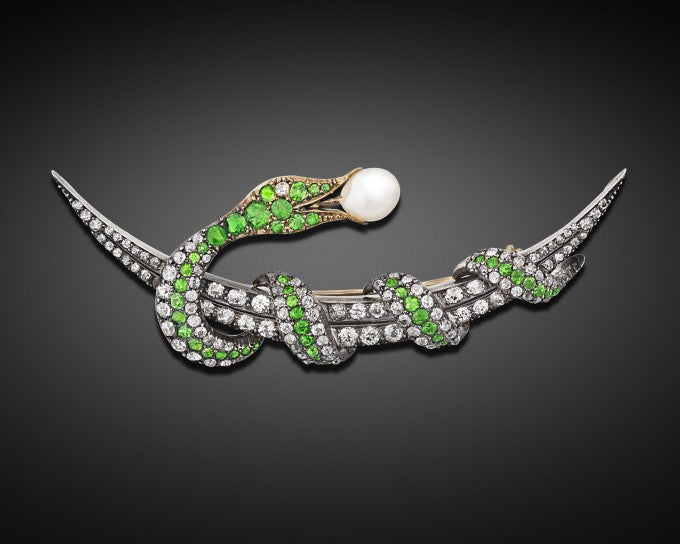Garnet jewelry has been around since ancient times alongside silver, gold, diamonds, and other popular jewelry pieces that still grace us with their presence today. Synonymous with the deep crimson-hued stones that blanketed ancient Egyptian pharaohs and queens, the lavishness of the red garnet gemstone has long been cherished as a staple in the jewelry market. Its rich history dates back thousands of years, beloved by many of the world's great ancient cultures. A stylish red garnet bead necklace was recently discovered in an Egyptian grave that perhaps accompanied a corpse into the afterlife - a testament to the garnet's long, rich history.

Like the Egyptians, Ancient Roman nobility utilized the garnet as a sign of prestige, importance, and rank, applying personal stamps to documents using garnet signet rings. In fact, red garnets were the most traded gem during the height of the Roman empire. Similarly, the Middle Ages ushered in a new class of high-ranking clergy members who utilized the garnet in their rich clerical robes and dress.
Where do they come from?
During the 19th century, mining regions in Russia and Bohemia were important sources for Garnets. Favored and prized by the Russian royalty and aristocracy and favored by highly-ranked jewelers like Peter Carl Faberge, garnets were a source of pure pleasure during the Victorian era. In modern times, the popularity of the garnet has continued. The rolling, 3D landscapes of Namibia and Tanzania are home to some of the most important garnet mines. The garnet can also be found in Brazil and Myanmar, among others.
A Kaleidoscope of Colors:

In the gemstone market, the multitude of garnet varieties cannot be over emphasized. While the garnet is best known for its deep red hue, it can also be found naturally in a rich palette of colors: vibrant oranges, heavily saturated greens, and intense yellows. Furthermore, garnets are also rich in rarities, including star garnets and color changing stones. Modern gem connoisseurs and experts alike can pick from this wide array of colors.
While the garnet gemstone is known for its red varieties, it is the precious Demantoid variety for which this gemstone has gained considerable attention.
The demantoid garnet is, perhaps, the most valuable variety of the garnet group. First discovered in the Ural Mountains in Russia in the mid-1880s, this variety experienced immediate popularity and was a favorite of the Czar’s royal court. In fact, the demantoid garnet was even incorporated into many of Faberge’s awe-inspiring creations. To no surprise, the demantoid garnet soon made its way into the European market and Edward VII prized the rich verdant green, its value radically increasing. Dramatically, these mines were purged by the Bolsheviks and all demantoid garnets disappeared from the gemstone market, along with any other symbols of wealth and royalty. After the political unrest that plagued Russia during the revolution, demantoids gradually re-entered the market and its radiant green hue was met with the same admiration and fascination. With the highest refractive index, its brilliance is unparalleled. So immense, in fact, that it rivals the vividness of both the ruby and sapphire.
Qualities to Look for:
Like with many other crystal gemstones, clarity plays a large role in the importance and value of a garnet. Simply put, the better the clarity, the higher quality the gemstone. For garnets, however, it goes a little deeper. Because there exist numerous different types of garnets, clarity cannot all be judged the same. Demantoid garnets, for example, are prized for their “horsetail” or thread-like inclusions. Other garnet varieties maintain different desirable characteristics, such as transparency, cut, and color.
The Garnet’s Forecast:
Are there more hues to be discovered? Gemologists agree that there is no reason to believe that all possible garnet varieties have been found. Setting the stage for more potential discoveries, the future vision of the garnet is, as the garnet itself, brilliant and utterly fascinating.
Today, the garnet is popularly known as the January birthstone and is a symbol for the second year of marriage, renowned for both its luxurious color and brilliant refractive index. A jewel of marvelous variety, the garnet is an exceptional gemstone that commands great consideration and boasts high admiration. Those garnets displaying sumptuous color, vibrancy, and size found in M.S. Rau Antiques’ selection of rare jewels are some of the finest garnets to be found.
View exquisite garnet jewelry here including garnet pendants, bracelets and stunning necklaces.



